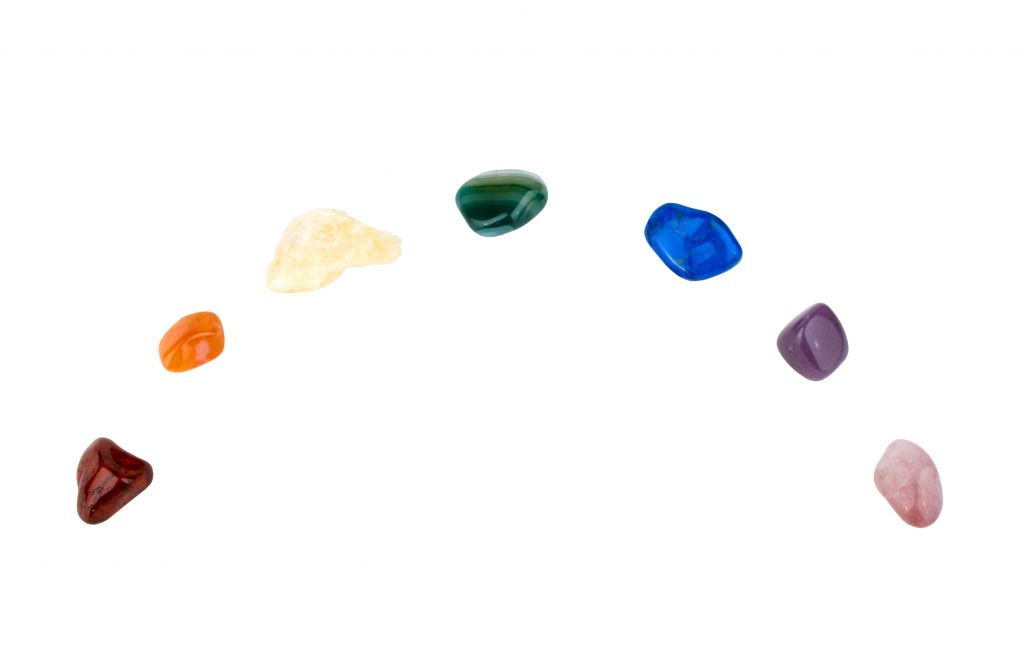Ancient philosophy across the world has focused on the goal of achieving inner peace. However, with the departure from these practices, and the invent of technology, modern humans have found a need to go back to wisdom of the past.
Transcendental meditation is a practice based in finding inner peace.
It’s no surprise that so many forms of meditation have become popular as a direct result of this never-ending quest. Few, however, can claim to have as much basis in science and research as transcendental meditation, a meditative technique designed to detach oneself from sources of anxiety and promote internal harmony and self-realization.
Perhaps the human condition is to seek peace of mind. Transcendental meditation is a surprisingly easy way to introduce mindfulness.
Benefits of transcendental meditation
Some effects reported from transcendental meditators include:
- Reduced stress
- Relief from depression
- Reduced anxiety
- Improved focus
- Better memory
- Improved academic performance
- Calmer sleep
- Better work efficiency
- Reduced risk of cardiovascular diseases
- Improved blood pressure maintenance
- Ease in quitting harmful addictions and health-endangering habits
- Better social skills and improved interpersonal relationships
What exactly is transcendental meditation?
The transcendental meditation technique is founded on the belief that the repetition of a phrase called a mantra, it is possible to rid the mind of all distractions and achieve a state of “relaxed awareness.”
Transcendental meditation practitioners and instructors will guide students by repeating a mantra facilitates a deeper state of relaxation by ridding the mind of strenuous conscious thinking. Instead of exerting effort on making the mind work a meditator feels a wave of calmness, which is said to encourage creativity, revitalize the body, and fill the spirit with contentment.
The theoretical perspective that powers transcendental meditation is referred to as the Science of Creative Intelligence. It is drawn from Vedanta, one of the six schools of Hindu philosophy.
(It is important to note, however, that practitioners need not subscribe to said philosophy in order to perform transcendental meditation practice).
What is the difference between transcendental meditation and other forms of meditation?
Transcendental meditation has its roots in India’s ancient Vedic traditions. Its main difference is the repetition of a chosen mantra as a technique to calm the mind.
It became popularized in the West by a spiritual guru from India. When the Hindu monk Swami Brahmananda Saraswati (who also went by the name Guru Dev) passed away in 1953, he had passed the technique down, adapted from Vedic practices.
One of Guru Dev’s followers, a man called the Maharishi Mahesh Yogi, made the practice known to the rest of the world starting in the late 1950s. Tagging it as the Spiritual Regeneration Movement, the Maharishi promoted it as “a secular path toward mental, emotional, and physical well-being.”
The name “transcendental meditation” was heavily used for two reasons: to clearly differentiate it from other forms of meditation, and to distance it from Hinduism and other religions and ensure that it stands on its own.
While the movement did enjoy a moderate level of success prior to the late 1960s, it received a welcome boost because of its acquisition of four high-profile believers: none other than the Beatles. Soon enough, other stars in various entertainment industries followed in John, Paul, Ringo, and George’s bell-bottomed footsteps. Meditation soon became the “trendy” thing, and the Maharishi’s method was in the spotlight.
Despite a few setbacks, the practice continued to thrive through the 1990s, and at the turn of the century, approximately six million people across the globe had already participated in at least one transcendental meditation class. The Maharishi died in 2008, but the transcendental meditation method survives up to the present day.
Is transcendental meditation effective? (Scientifically)
There is increasing support amongst neuroscientists and psychologists for the transcendental meditation technique. Among its oft-cited benefits are stress reduction, the capability to lower one’s blood pressure, reduce anxiety and, depression. Positive effects include stimulating the healthy brain patterns, and encouraging creativity.
What does TM do to the brain?
In 2018 involving 16 long-term transcendental meditation practitioners. The researchers observed that blood flow patterns (fMRI) in the practitioners were significantly higher in the executive and attention areas (anterior cingulate and dorso-lateral prefrontal cortices) and significantly lower in arousal areas (pons and cerebellum) during the meditation practice.
It is worth noting that this pattern has not been observed in other forms of meditation. This supports the notion that transcendental meditation does not require much effort.
Reduce anxiety
An independent study in 2014 looked at the effects of transcendental meditation on teachers and support staff working in a therapeutic school for students with behavioral problems. The researchers found that the technique had a significant effect in terms of reducing psychological distress in the employees.
Benefits for heart and cardiovascular health
One study from 2007 concluded that transcendental meditation “can be effective in improving the quality of life and functional capacity of African-American congestive heart failure patients.” Another study reported that the technique had a profound effect on the self-efficacy, perceived stress, and mental and physical quality of life of financially constrained mothers in Uganda.
Is it scientifically proven?
A number of organizations have expressed concerns regarding the veracity of the claims surrounding transcendental meditation. They argue that due to the poor quality of the initial research combined with the possibility that the results were skewed in the organizations favor, these findings on transcendental meditation’s health effects remain inconclusive at best.
Meanwhile, other studies claim that transcendental meditation is actually no different from other types of meditative practices out there.
- The American Heart Association downplayed the effectiveness of transcendental meditation as hypertension treatment in 2013, saying that while it did work for that purpose, other methods such as regular exercise turned out to be more effective.
- The U.S. Agency for Healthcare Research and Quality expressed their doubts that transcendental meditation (as well as other forms of mantra-related meditation styles) could actually have any sort of impact on one’s mental health.
- For blood pressure lowering and heart disease prevention, studies from the Journal of Human Hypertension (2015) and The Cochrane Database of Systematic Reviews (2014) concluded more well-designed tests are required for confirmation and the latter saying that the limitations of scientific literature on transcendental meditation makes it hard to confirm its purported effects.
While firm scientific validity isn’t confirmed, the benefits of transcendental meditation is breaking into the professional community.
How do Mantras Work?
A few essential factors are surrounding the use of mantras. First, mantras have various vibrational characteristics. That’s why each TM student uses its own unique mantra. “Love” and “Jealousy,” both words are exceptionally strong feelings, and both of them create a specific vibrational sound.
You can actually try and repeat these two words to yourself a few times, and feel the difference that they create. That’s why it’s essential that you use a specific mantra and produce the energy you desire.
Next important factor is the focus. Our minds are frequently cluttered with random stuff. By having a word that we can focus on our attention we can free ourselves from this “internal scuffle”.
At the bottom of the page is a list of internal mantras to select.
How to do Transcendental Meditation by Yourself
If for any reason, you are unable to avail a guide for transcendental meditation, you may follow these steps.
- Switch off all your mobile devices for the next 25 minutes. Set a timer or put a clock nearby to alert you.
- Sit in an upright but comfortable position, eyes closed, feet on the floor.
- Choose a simple mantra; it should be a sound, and not necessarily a word, that you can easily say and think of. For example,
- Repeat your chosen mantra silently, in your head, letting it flow within with minimal effort. Make sure that you don’t drift off, though. Focus on the mantra, and just the mantra. Let go of any ill feelings or thoughts.
- Keep going for 20 minutes.
- For the few remaining minutes of your meditation time, sit in silence, with your mind completely empty.
A simple guided transcendental meditation
- To experience guided transcendental meditation techniques, one must find a certified guide and undergo a course of instruction consisting of a few basic steps. The transcendental meditation experience begins with an hour-long introductory lecture, followed by a 45-minute lesson on what the technique means and how it can really impact a person’s well-being.
- After this, the participant attends a brief interview, after which they receive their personalized instructions. It is at this point where, during a short ceremony, the participant chooses the mantra they’ll repeat to themselves each session (which they should never tell anyone else about).
- Subsequent lessons over the next three days span one to two hours each. In these lessons, the instructor will further flesh out the practice, encourage doing it regularly, and meet with practitioners over the next few months to make sure that they always execute the proper form when attempting to meditate.
Each transcendental meditation session can last anywhere between 15 to 20 minutes. Practitioners usually do this twice a day, and initially require the guidance of their instructor to perform the sessions properly.
Take note, however, that if you have certain medical conditions involving your mental well-being, you’ll need to speak with your physician before you proceed.
Should you begin transcendental meditation?
The official website of transcendental meditation presents four major reasons to try the method.
- It promotes the technique as one that does not require a disproportionate amount of effort or mentally taxing skill just to work. In fact, they outright state that the method is by no means intended to “empty the mind,” and that even children diagnosed with ADHD would have no trouble performing the practice.
- Transcendental meditation courses are tailored specifically for the practitioner. The technique is taught by a single teacher to a single student, and is crafted based on your needs and preferences. Furthermore, only official transcendental meditation instructors are permitted to teach you the technique. That’s why there isn’t a single routine or formula that one can pull up and just follow to a T.
- It’s purportedly “guaranteed” to work. As a matter of fact, it even comes with a satisfaction guarantee.
- Perhaps the most compelling reason: the science checks out. According to their own tally, there are hundreds of research studies that have been published in the past few years, attesting to the transcendental meditation technique’s significant impact on preventing heart diseases, neurological functionality, and relieving stress.
Mantras for meditation
| X | Most famous mantra |
| (Mantras Used By Gurus in 1961) | |
| 1 | Mantra for male students |
| 2 | Mantra for female students |
| (Mantras Used By Gurus in 1969) | |
| 3 | Mantra for male students (0 – 15 years old) |
| 4 | Mantra for male students (15 – 30 years old) |
| 5 | Mantra for male students (30 – 45 years old) |
| 6 | Mantra for male students (46+ years old) |
| 7 | Mantra for female students (0 – 15 years old) |
| 8 | Mantra for female students (15 – 30 years old) |
| 9 | Mantra for female students (30 – 45 years old) |
| 10 | Mantra for female students (46+ years old) |
| (Mantras Used By Gurus in 1972) | |
| 11 | Mantra for students (10 – 11 years old) |
| 12 | Mantra for students (12 – 13 years old) |
| 13 | Mantra for students (14 – 15 years old) |
| 14 | Mantra for students (16 – 17 years old) |
| 15 | Mantra for students (18 – 19 years old) |
| 16 | Mantra for students (20 – 21 years old) |
Conclusion
As a technique, transcendental meditation easy to begin by yourself. Today there is a growing body of evidence around to support it than most of the other popular meditative techniques out there.
Would you consider trying transcendental meditation? Have you tried it before?
Leave your thoughts in the comments section below.
Further reading:
- https://tmhome.com/transcendental-meditation/
- https://www.ncbi.nlm.nih.gov/pubmed/24107199
- https://www.ncbi.nlm.nih.gov/pmc/articles/PMC3951026/
- https://www.ncbi.nlm.nih.gov/pubmed/29494787
- https://www.tm.org/popups-responsive/brain.html
- https://www.tm.org/popups-responsive/heart-charts.html
- https://www.ncbi.nlm.nih.gov/pubmed/29505943


 The transcendental meditation technique allows you to find peace within the own mind and may reduce risk of heart disease.
The transcendental meditation technique allows you to find peace within the own mind and may reduce risk of heart disease. 






















